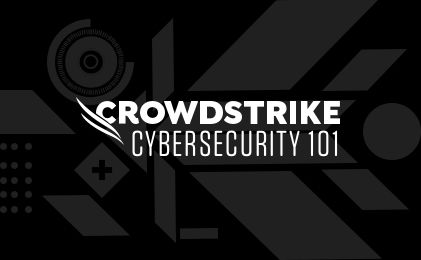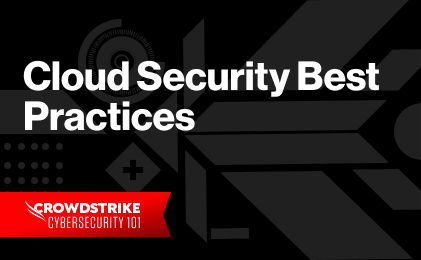CDR vs CNAPP: What's the difference?
The modern IT landscape looks nothing like it did 20 years ago before the cloud revolution. Now, organizations rely on cloud environments for their data storage and business operations. These environments are complex and dynamic, and protecting the cloud infrastructure requires robust and extensive solutions.
Cloud detection and response (CDR) tools and cloud-native application protection platforms (CNAPPs) are two solutions for tackling the challenges of cloud environment security. They’re often conflated, but they have distinct operations and feature sets. CDR solutions automatically correlate threats from real-time signals and encompass CNAPPs, threat hunting, and managed services, whereas CNAPPs secure the entire cloud application stack throughout its development and deployment life cycle.
In this article, we’ll examine CDR and CNAPPs more closely. We’ll consider their key components and benefits, then draw some comparisons. Ultimately, we’ll see how CDR is a comprehensive cloud security solution that includes a CNAPP as a key component.
What is cloud detection and response?
CDR is “a set of security capabilities specifically designed for cloud environments that focuses on threat detection, immediate incident response, and service integrations.” It uses real-time analytics, threat intelligence, and threat hunting to generate comprehensive insights into cloud environments. Continuous monitoring and real-time visibility strengthen an organization’s cloud security posture by detecting anomalies, tracking the movements of potential attackers within the system, and improving the mean time to respond (MTTR) for security incidents.
Key components in CDR
Because CDR is such an all-encompassing security solution, it involves many components:
- Hunt with threat intelligence: CDR tools proactively search for and analyze comprehensive data to uncover threat actors’ motives, targets and attack behaviors. This is done using AI-native threat intelligence and 24/7 threat hunting services to provide evidence-based knowledge and actionable insights for SOC teams. Data gathered with threat intelligence informs all the other capabilities of CDR.
- Detecting cloud indicators of attack (IOAs): Data gathered from threat intelligence is used to identify attacker activity in the cloud. This is done through correlation of real-time workload activity alongside agentless telemetry. CDR solutions use advanced AI algorithms to identify malicious activities as they occur within the cloud environment. Dwell time is critical during a cyber breach, so improving mean time to detect (MTTD) helps organizations resolve security threats before significant damage can occur.
- Protect with Cloud Workload Protection: Integrated runtime cloud workload protection automatically blocks malicious processes to safeguard cloud workloads in real-time.
- Investigate and prioritize with Attack Path Analysis: This is a visualization of attack activity, asset relationships and threat context across domains. This provides security and incident response teams with prioritized and actionable responses by swiftly isolating compromised resources, blocking malicious activity and reapplying necessary security patches.
- Respond with integrated workflow automation: Security operations are streamlined through native SOAR integration and DevSecOps-friendly workflows. These enable teams to automate remediation at scale while maintaining existing operational processes across cloud environments.
- Integration with existing security tools: Cloud detection and response solutions should include a CNAPP should include context from other cloud security solutions such as cloud workload protection (CWP), cloud security posture management (CSPM), cloud infrastructure entitlement management (CIEM), and application security posture management (ASPM).
Benefits of CDR
CDR provides many cloud security benefits for organizations:
- Accelerating cloud investigations: CDR enables organizations to quickly and confidently investigate malicious activity with cloud context. This is done with a unified threat detection engine across endpoints, identities and cloud environments.
- Stopping breaches: Sensor blocking with CWP, automated containment workflows and 24/7 managed detection and response protect cloud environments and vulnerable cloud data.
- Scalable remediation: CDR solutions are able to seamlessly translate the root cause of attacks into scalable remediation. This is done with cloud-native responses via API and external integrations allowing CDR solutions to scale across organizations of any size.
CrowdCast: 2025 Top Cybersecurity Trends
This on-demand CrowdCast series offers expert insights to develop your unified cybersecurity stratregy. Learn how a unified-AI native platform eliminates security gaps while fortifying defenses against evolving threats.
What is a cloud-native application protection platform?
A CNAPP is an end-to-end security solution designed to monitor, detect, and mitigate security threats across the entire cloud application stack. It addresses cloud environments’ complicated and changeable nature and is equipped for workload monitoring, compliance auditing, and identity management.
Key components in a CNAPP
A CNAPP solution utilizes multiple key components to achieve holistic security across every level of the cloud environment.
- Cloud workload protection: CWP uses real-time threat detection and response to monitor the security and performance of resources at the cloud workload level (such as VMs, databases, and containers).
- Cloud security posture management: CSPM continuously monitors dynamic cloud environments for misconfigurations, compliance issues, and security risks. It automatically detects violations in best practices, regulatory requirements, and compliance across the entire stack and delivers real-time alerts and guidance for incident response.
- Cloud infrastructure entitlement management: CIEM effectively manages identities, permissions, and access control for dynamic cloud environments, where identity and access management (IAM) tools often fail to provide robust security coverage. CIEM detects and reports access control violations promptly, ensuring security teams can quickly address and resolve potential security threats.
- Application security posture managemen: ASPM monitors application security throughout the life cycle, addressing vulnerabilities as they arise. It also helps organizations maintain compliance and security by providing continuous visibility, identifying application vulnerabilities, and ensuring adherence to regulatory standards.
- Infrastructure as code (IaC) security: IaC security tools proactively scan configuration files early in development. DevOps teams use IaC tools — such as Terraform or AWS CloudFormation — to provision and configure cloud resources. Without adequate security measures, these resources are prone to vulnerabilities or misconfigurations, potentially exposing cloud applications to security threats once deployed. IaC security tools identify compliance issues and access control violations, thus mitigating potential security risks before deployment.
Benefits of CNAPPs
Organizations that adopt a CNAPP experience benefits that include:
- Comprehensive security: CNAPPs safeguard many cloud resources, from development to production. They also address misconfigurations, IaC vulnerabilities, and access violations.
- Integration with DevSecOps: A CNAPP embeds security throughout development by integrating with CI/CD pipelines to deliver early detection and remediation of security issues.
- Unified visibility: By unifying a multi-tool security approach into a single solution, DevOps teams work efficiently with comprehensive visibility across the application stack.
Comparing CDR and CNAPP
CDR tools and CNAPPs certainly have crossover, especially as effective CDR approaches include a CNAPP. In terms of the scope of security coverage, CDR tools focus on real-time threat detection and response that enhances visibility and reduces mitigation time for security incidents. As part of its comprehensive strategy, CDR incorporates a CNAPP, which focuses more narrowly on threat prevention, compliance auditing, and application security across the application stack.
CDR solutions and CNAPPs both integrate well with DevOps practices, enhancing security within the development workflow. However, CNAPPs are more deeply embedded in the development processes, ensuring security measures are applied consistently throughout the entire application life cycle.
Both tools share several similarities, making them essential for robust cloud protection:
- Visibility and risk management: Both tools offer real-time threat detection and insights into cloud environments to mitigate critical issues quickly.
- Automation: Both tools automate threat detection, analysis, and response through continuous scanning, improving efficiency and allowing security personnel to focus on strategic activities.
- Integration: CDR tools and CNAPPs seamlessly integrate with existing security tools but differ in their specific integration points. CDR solutions integrate with security information and event management (SIEM) and endpoint security tools, whereas CNAPPs integrate with CI/CD pipelines and compliance and governance tools.

Quick Start Guide To Securing Cloud-Native Apps
Download this quick start guide for securing cloud-native applications.
Download NowThe all-in-one solution: CrowdStrike Falcon Cloud Security
CDR tools and CNAPPs are vital in enhancing cloud security by providing automation, visibility, incident response, and integration with existing tools. CDR solutions help proactively identify and mitigate threats, ensuring rapid incident response to protect cloud environments. The feature set of a comprehensive CDR solution includes a CNAPP, which focuses on security concerns at the application stack level — including threat prevention, compliance, and application security.
CrowdStrike Falcon® Cloud Security is an integrated, comprehensive cloud protection solution that brings effective and comprehensive CDR to your organization. It’s a single-agent platform that helps you stop cloud breaches, and it bundles CNAPP capabilities — such as CWP, CSPM, CIEM, and ASPM — with real-time threat monitoring and incident response.







